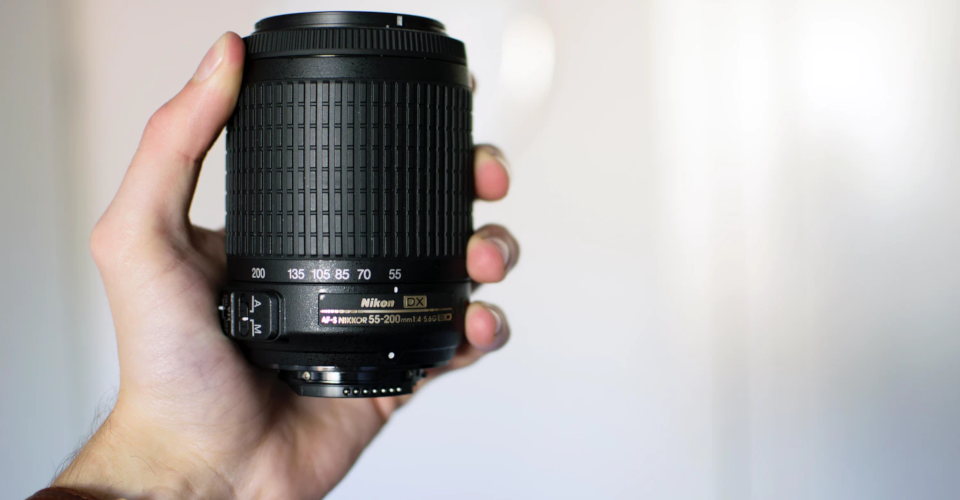6 Best Nikon Macro Lens Picks for 2020
The subjects they capture might be small, but macro lenses themselves offer untold possibilities. You can use macro lenses to digitize slides and preserve them for posterity. They’re also indispensable in shooting insects, old coins, or small collector’s items lie stamps and mineral samples. Their unique close-focusing capabilities and 1:1 magnification transform macro lenses into gateways to a tiny world we often overlook.
Nikon lovers are in luck since there are many original and third-party options out there. Choosing one is about to get much easier as we’ve reviewed and ranked the six best Nikon Macro lens picks in this helpful review. They’re all razor-sharp, have 1:1 magnification, and are equally effective for other types of photography. Get one now and discover the beauty that lies in small things.
| Budget |
|---|
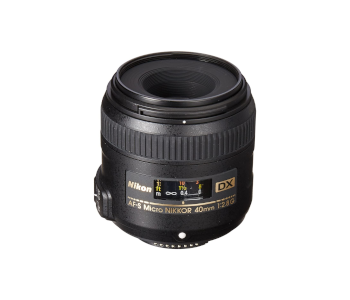 |
| Nikon AF-S DX Micro-NIKKOR 40mm f/2.8G |
| 4.3/5.0 |
| Focal length: 40mm |
| Angle of view: 38° 50′ |
| No lateral CA or distortion issues and quiet operation. |
| Check Amazon |
| Best Value |
|---|
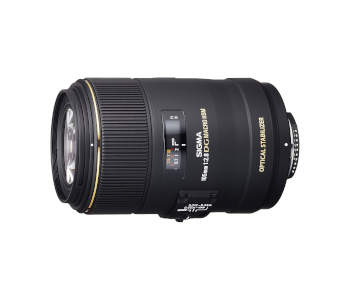 |
| Sigma 105mm f/2.8 EX DG OS HSM Macro |
| 4.5/5.0 |
| Focal length: 105mm |
| Angle of view: 23° 20′ |
| This produces a creamy bokeh. |
| Check Amazon |
| Top Pick |
|---|
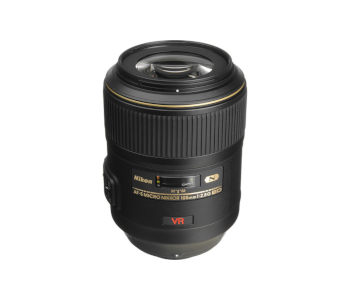 |
| Nikon AF-S VR Micro-NIKKOR 105mm f/2.8G IF-ED |
| 4.8/5.0 |
| Focal length: 105mm |
| Angle of view: 23° 20′ |
| Excellent build quality and no barrel distortion. |
| Check Amazon |
Nikon Macro Lenses Comparison Table
| Image | Product | Overall Rating | Image quality | Build quality | Versatility | Price |
|---|---|---|---|---|---|---|
 | Nikon AF-S VR Micro-NIKKOR 105mm f/2.8G IF-ED | 4.8 | 4.9 | 4.7 | 4.6 | Check Price |
 | Sigma 105mm f/2.8 EX DG OS HSM Macro | 4.5 | 4.5 | 4.4 | 4.6 | Check Price |
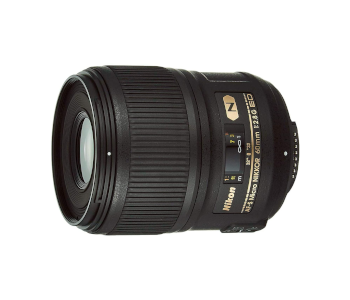 | Nikon AF-S Micro NIKKOR 60mm f/2.8G ED | 4.6 | 4.6 | 4.4 | 4.7 | Check Price |
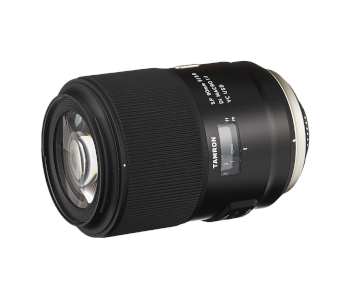 | Tamron SP 90mm f/2.8 Di VC USD Macro | 4.5 | 4.4 | 4.6 | 4.5 | Check Price |
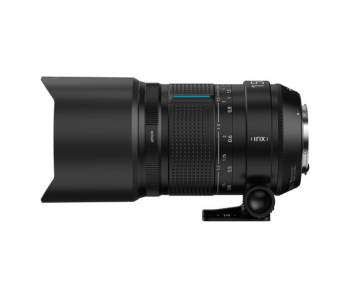 | IRIX 150mm f/2.8 Macro 1:1 Dragonfly | 4.5 | 4.6 | 4.5 | 4.3 | Check Price |
 | Nikon AF-S DX Micro-NIKKOR 40mm f/2.8G | 4.3 | 4.4 | 4.1 | 4.3 | Check Price |
1. Best Overall – Nikon AF-S VR Micro-NIKKOR 105mm f/2.8G IF-ED
Editor’s Rating: 4.8/5
There’s nothing like the original for shooting macro stills since Nikon’s AF-S VR Micro-NIKKOR 105mm f/2.8G IF-ED blows the competition away. Its sharpness is remarkable, and every other optical property is at least decent. Pair it with either a full-frame or APS-C Nikon camera and reveal hidden details in the smallest subjects.
Overview of Features
The AF-S VR Micro-NIKKOR 105mm f/2.8G IF-ED is a well-built if hefty lens that looks bulky on smaller cameras. Its barrel is made from metal and sports large VR & N tags. These indicate image stabilization and a Nano Crystal Coat applied to the backmost element that combats flare. The focus ring is generously wide and turns smoothly.
This is one of the first lenses to use Nikon’s Silent Wave technology in autofocus motor construction. Its operation is characteristically quiet, but the lens does tend to hunt more than models meant for different purposes. That isn’t a problem for macro work that heavily relies on manually tweaking the focus anyway, which you can do at any time. The lens also has Vibration Reduction and compensates for four stops, allowing you to lower the shutter speed while shooting handheld.
Outstanding sharpness from the get-go is the AF-S VR Micro-NIKKOR 105mm f/2.8G IF-ED’s best attribute. It’s tack-sharp in the middle as a macro lens should be, but we were more impressed with its edges and corners. They fall behind the center on f/2.8 yet close the gap by f/4 and are identical at f/5.6! This lets you create uniformly sharp images and means you can use the lens for architecture or interior photography with excellent results.
Nano Crystal Coating and the AF-S VR Micro-NIKKOR 105mm f/2.8G IF-ED’s deep circular hood keep flares at bay while its 14 elements in 12 groups control chromatic aberration on all but the smallest aperture sizes. Barrel distortion is nonexistent for practical purposes as it doesn’t exceed a third of a percent.
What We Didn’t Like
The AF-S VR Micro-NIKKOR 105mm f/2.8G IF-ED is the most expensive macro lens on review. It displays close to two stops of light falloff at f/2.8. The effect disappears if you step down to f/5.6 or correct for it in your photo editing software of choice.
| Tech Specs |
|---|
| Dimensions: 3.3 x 3.3 x 4.5 in. |
| Weight: 1.6 lbs. |
| Focal length: 105mm |
| Maximum aperture: f/2.8 |
| Minimum aperture: f/32 |
| Minimum focus distance: 1 ft. |
| Angle of view: 23° 20′ |
| Image stabilization: Yes |
| The Pros |
|---|
| World-class sharpness, especially in the edges and corners |
| Excellent build quality |
| No barrel distortion |
| No issues with flares |
| The Cons |
|---|
| Expensive |
| Noticeable vignetting when wide opens |
2. Best Value – Sigma 105mm f/2.8 EX DG OS HSM Macro
Editor’s Rating: 4.5/5
Macro photographers looking for a lens with comparable quality to our winner’s at a much better price should turn to Sigma and its excellent 105mm f/2.8 EX DG OS HSM. It has the same focal length and barely lags behind Nikon’s top model when it comes to sharpness and optics. The lens is fast, quick to focus for a macro model, and produces some of the finest bokeh in its class.
Overview of Features
The 105mm f/2.8 EX DG OS HSM weighs the same as Nikon’s lens but is narrower and fits better on APS-C camera. It’s not designated as being weather-sealed, but the rubberized plastic body and strategically-placed metal elements speak of quality nevertheless. The focus ring might feel stiff until you break it in, and a metal mount ensures a strong connection to your camera. The lens comes with a barrel-shaped hood with support for an extender that offers even more protection from glaring light.
Sigma uses HyperSonic Motors to deliver quiet and reasonably fast autofocus. The 105mm f/2.8 EX DG OS HSM snaps to targets near and far in good time, even in poorly-lit environments. You can speed it up further by toggling the focus limiter. The SO in its name stands for Optical Stabilization, a shake reduction system comparable to Nikon’s. You’ll get the maximum four f-stops out of it for far-away targets as the benefit for close-ups is negligible.
The 105mm f/2.8 EX DG OS HSM allows its user a higher degree of creative freedom for macro shots since changing the aperture has little effect on its central sharpness. It starts out very well and culminates in excellent territory by the time you reach f/5.6. The edges and corners improve more aggressively and reach their peak at f/8. You can confidently shoot up to f/16 if you don’t mind some detail loss due to diffraction.
We love the 105mm f/2.8 EX DG OS HSM’s bokeh quality and the uniform blur it imparts to out-of-focus backgrounds. Highlights don’t have harsh borders, and fringing is controlled better than on most fast primes. There’s no barrel distortion or lateral CA, and shooting with the sun in the frame causes artifacts only in extreme cases you can avoid by shifting your position.
What’s Bad About It?
The 105mm f/2.8 EX DG OS HSM‘s autofocus isn’t consistently accurate. This might not be a deal-breaker for you if you primarily focus manually, but it does diminish its value as a portrait lens. There’s also vignetting comparable to that seen on our winner you can take care of in the same way.
| Tech Specs |
|---|
| Dimensions: 3.1 x 3.1 5 in. |
| Weight: 1.6 lbs. |
| Focal length: 105mm |
| Maximum aperture: f/2.8 |
| Minimum aperture: f/22 |
| Minimum focus distance: 1 ft. |
| Angle of view: 23° 20′ |
| Image stabilization: Yes |
| The Pros |
|---|
| Excellent value for the money |
| Produces creamy bokeh and smooth background blur |
| No barrel distortion |
| Few color fringing and CA issues |
| The Cons |
|---|
| Inconsistent autofocus accuracy |
| Moderate vignetting at f/2.8 |
3. Nikon AF-S Micro NIKKOR 60mm f/2.8G ED
Editor’s Rating: 4.6/5
Macro lenses are usually in the 90-150mm focal length range, but Nikon’s AF-S Micro NIKKOR 60mm f/2.8G ED is a useful and versatile outlier. Pairing it with a full-frame camera results in an almost natural viewing angle you’d get from a “nifty-fifty” and makes the lens an excellent choice for all kinds of photography. Using it with a smaller APS-C camera turns it into a medium telephoto lens perfect for portraits and sports. It’s slightly weaker as a macro lens than our overall winner but makes up for this with its excellent sharpness and versatility.
Overview of Features
The AF-S Micro NIKKOR 60mm f/2.8G ED is a streamlined macro lens that’s considerably thinner and lighter than its rivals. The matte-black polycarbonate body has golden accents and a single switch to toggle from manual to automatic focusing. The lens mount is metal and lined with a rubber gasket for extra protection from moisture and dust buildup.
The autofocus is neither awful nor particularly adept. You’ll notice slower acquisition speeds if you have a fast prime like the Nikon AF-S Nikkor 50mm f/1.8G, but these come into play more if you use the lens for portraits or group shots. Luckily, focus acquisition is accurate and doesn’t force you to make manual adjustments. The ring is rubberized and turns smoothly if you do need to make the occasional tweak.
It’s a testament to the AF-S Micro NIKKOR 60mm f/2.8G ED’s quality that you can snap architectural photos at f/2.8 without worrying about soft corners. Sharpness keeps improving across the frame as you approach f/8, and the lens is still exceptional at f/11. You can narrow the aperture to f/16 if you want appealing sun stars in your images, but stepping down further is unadvisable.
This is one of the best lenses we’ve ever tested when it comes to distortion. You’ll notice it only in lab tests since it doesn’t exceed 0.1%! There’s some CA at wider apertures that quickly clears up once you’re at f/5.6 or lower. Expect smooth background blur and nice-looking bokeh, although blowing images up at f/2.8 shows onion rings at times.
Are There Drawbacks?
The AF-S Micro NIKKOR 60mm f/2.8G ED exhibits strong vignetting when attached to full-frame cameras. The effect isn’t as pronounced on APS-C bodies, though. It also lacks image stabilization, which makes photographing small animals and insects tough since you have to use a tripod and might scare them off.
| Tech Specs |
|---|
| Dimensions: 2.9 x 2.9 3.5 in. |
| Weight: 15 oz. |
| Focal length: 60mm |
| Maximum aperture: f/2.8 |
| Minimum aperture: f/32 |
| Minimum focus distance: 7.3 in. |
| Angle of view: 39° 40′ |
| Image stabilization: No |
| The Pros |
|---|
| Versatile focal length |
| Excellent overall sharpness, even when wide open |
| No distortion |
| Smooth background blur |
| The Cons |
|---|
| No image stabilization |
| Strong vignetting at f/2.8 |
4. Tamron SP 90mm f/2.8 Di VC USD Macro
Editor’s Rating: 4.5/5
Tamron makes third-party lenses for Sony, Canon, and Nikon cameras, and the SP 90mm f/2.8 Di VC USD is among its finest. It’s a lens characterized by exceptional build quality, commendable sharpness, and balanced optics. Add high contrast levels & outstanding vignetting control, and you’ve got a worthy alternative to Nikon’s originals.
Overview of Features
The SP 90mm f/2.8 Di VC USD is among the best looking and best-constructed lenses on review. Its body is metal and weather-sealed, which makes the lens ideal for wildlife close-ups. It has two anti-glare coatings and a layer of fluorine on the outer glass to better resist smudging and raindrops. It supports 62mm filters, and the front-most element is easy to clean since it is close to the rim.
Tamron uses Ultrasonic Silent Drives for quiet and speedy autofocus in most lighting. The SP 90mm f/2.8 Di VC USD can hesitate when acquiring focus and settles on its target after some back & forth. However, this doesn’t happen frequently. You can speed up the autofocus even more by setting the limiter switch to a range of 0.3 to 0.5m. Vibration Compensation isn’t as effective as Nikon’s Vibration Reduction and promises correction at a maximum of 3.5 stops. That’s enough to make you leave the tripod at home for most situations, though.
The SP 90mm f/2.8 Di VC USD produces images with excellent central sharpness, no matter the aperture. Its corners border on soft at f/2.8 and make a leap in quality at f/4. Sharpness across the frame continues to improve until its apex at f/8. The lens maintains high contrast levels and holds its own against flares unless you’re shooting straight into the sun.
The lens has an academic amount of pincushion distortion that’s irrelevant for field performance. Vignetting is handled well for a macro lens and never exceeds 1.5 stops. You can pull off attractive background blur with seamless transitions between colors, while bokeh has visible edges at f/2.8 that don’t pose a problem.
What We Didn’t Like
The SP 90mm f/2.8 Di VC USD has some lateral chromatic aberration at wide apertures. Thankfully, color fringing isn’t problematic. You’ll want to settle on an aperture first and bring subjects into focus after that since the lens suffers from moderate focus breathing.
| Tech Specs |
|---|
| Dimensions: 3.1 x 3.1 4.9 in. |
| Weight: 1.3 lbs. |
| Focal length: 90mm |
| Maximum aperture: f/2.8 |
| Minimum aperture: f/32 |
| Minimum focus distance: 11.8 in. |
| Angle of view: 27° 2′ |
| Image stabilization: Yes |
| The Pros |
|---|
| Outstanding build quality |
| Quick and quiet autofocus |
| Great central sharpness |
| Handles vignetting well |
| The Cons |
|---|
| Some chromatic aberration at wide apertures |
| Shows moderate focus breathing |
5. Irix 150mm f/2.8 Macro 1:1 Dragonfly
Editor’s Rating: 4.5/5
Wildlife photographers value macro lenses with a focal length of 150mm like Irix’s Dragonfly. On the one hand, 150mm comes with a longer minimum focusing distance, which reduces the likelihood of animals and insects being scared off and gives you more light. On the other, you can seamlessly switch to using the lens as a standard telephoto and capture images of animals or sports from a distance. That’s just the first of many unusual features this lens has to offer, though.
Overview of Features
The Dragonfly is a hefty macro lens that balances well on full-frame cameras, nevertheless. It’s made from premium-quality magnesium alloy and certified as being protected against fog, rain, and snow. Irix has its own version of glare reduction called Neutrino Coating, and the lens ships with a deep petal-shaped hood that mitigates all but the most stubborn artifacts.
This is one of few modern lenses we’ve tested that lacks autofocus. Luckily, much thought has been put into designing the focus ring, so getting a crystal-clear view of subjects isn’t an issue. The ring is wide and knurled for precise movement even when wet. It has a throw of 270 degrees, allowing you to make minute adjustments with ease. A small lock ring sits in front of it and determines how easy it is to rotate the focus ring. This is useful for when you’re holding the lens vertically and don’t want to affect the focus accidentally.
A removable tripod mount is another thing you don’t see on macro lenses. It has a built-in CPU that relays data on the current f-stop to your camera. Using the mount speeds up switching from landscape to portrait mode and has an Arca-Swiss mount for use with tripods.
The Dragonfly’s corner and central sharpness start close together and continue evolving along a nearly identical curve. Both are very good at f/2.8 and have a jump in quality at f/4. Overall picture sharpness continued to improve until f/8 and starts to decline after f/16 visibly.
We already mentioned a lack of flare and artifacts, but that’s just one of the Dragonfly’s solid optical properties. Its pincushion resistance is comparable to Tamron’s lens or nonexistent in other words. Light falloff in the corners is handled even better, while chromatic aberration is among the smallest we’ve encountered. Bokeh and background blur look wonderful, too.
What’s Bad About It?
Lack of autofocus won’t be missed by most macro photographers but might be an issue if you’re keen on using the Dragonfly for other photography types. Coupled with a lack of image stabilization, this makes it a hassle to use for fast-action photos that require quick reaction times and a steady hand.
| Tech Specs |
|---|
| Dimensions: 3.4 x 3.4 5.3 in. |
| Weight: 1.9 lbs. |
| Focal length: 150mm |
| Maximum aperture: f/2.8 |
| Minimum aperture: f/16 |
| Minimum focus distance: 13.6 in. |
| Angle of view: 16° |
| Image stabilization: No |
| The Pros |
|---|
| Great build quality & weather sealing |
| Versatile lens ring |
| Precise manual focusing |
| Exceptional optics |
| The Cons |
|---|
| Lack of autofocus might bother some users |
| No image stabilization |
6. Best Budget Option – Nikon AF-S DX Micro-NIKKOR 40mm f/2.8G
Editor’s Rating: 4.3/5
Nikon’s 40mm macro lens is an APS-C camera exclusive that comes with a price to match. Don’t take that as an indicator of image quality as the AF-S DX Micro-NIKKOR 40mm f/2.8G is sharper than it has any right to be. It handles lens flare exceptionally well and excels at photographing small, unmoving subjects like flowers or food. Best of all, it’s in standard prime territory and praised as an affordable tool for portraiture.
Overview of Features
The AF-S DX Micro-NIKKOR 40mm f/2.8G is the smallest and lightest lens on review, unsurprising given its APS-C format. Pairing it with a camera like the D5600 barely adds any weight while maintaining optimum balance. The lens is made from high-grade plastic and has a metal mount that ensures it fits snugly on your camera. Buying it also gets you a petal-shaped hood.
Autofocus on the AF-S DX Micro-NIKKOR 40mm f/2.8G is a mixed bag. It is reasonably fast at distances close to infinity and can be improved by turning the focus limiter on. Approaching the minimal focusing distance causes it to slow down, and the lens may start to hunt if it isn’t getting enough light. You can override it with manual adjustments at any time with turns of the broad focus ring.
It’s hard to believe that a lens this sharp costs less than $250. It hits the ground running with strong central sharpness while the edges are weaker but by no means soft. The lens follows a pattern we’ve already established in the review – it gets sharper and stays that way until diffraction starts to interfere at the lowest apertures. The only difference is that it reaches peak performance at f/5.6.
Other optical properties are fine as well. Flare is minimal and becomes even less pronounced if you attach the hood. A modest amount of pincushion distortion is irrelevant for real-world shots, and the same can be said for lateral chromatic aberration. There is some vignetting you’ll want to take care of by shooting JPEGs or lightening up RAW files in post. You could technically use the lens with a full-frame camera but would end up with black corners you’d have to crop.
Are There Drawbacks?
An uncomfortably close minimum focusing distance is the AF-S DX Micro-NIKKOR 40mm f/2.8G’s most serious flaw. It leaves room for little light to illuminate the subject, so you’ll have to work in a brightly-lit environment. This also makes photographing live macro subjects harder as they’re more likely to run or fly away. The lens displays color fringing on blurred highlights at f/2.8. Switching to f/4 or lower helps.
| Tech Specs |
|---|
| Dimensions: 2.7 x 2.7 2.5 in. |
| Weight: 8.3 oz. |
| Focal length: 40mm |
| Maximum aperture: f/2.8 |
| Minimum aperture: f/22 |
| Minimum focus distance: 6.4 in. |
| Angle of view: 38° 50′ |
| Image stabilization: No |
| The Pros |
|---|
| Exceptionally sharp considering the price |
| Light and compact |
| No lateral CA or distortion issues |
| Quiet operation |
| The Cons |
|---|
| Minimum focusing distance too close for live macro subjects |
| Some color fringing at f/2.8. |
Contents
- Nikon Macro Lenses Comparison Table
- 1. Best Overall – Nikon AF-S VR Micro-NIKKOR 105mm f/2.8G IF-ED
- Overview of Features
- What We Didn’t Like
- 2. Best Value – Sigma 105mm f/2.8 EX DG OS HSM Macro
- Overview of Features
- What’s Bad About It?
- 3. Nikon AF-S Micro NIKKOR 60mm f/2.8G ED
- Overview of Features
- Are There Drawbacks?
- 4. Tamron SP 90mm f/2.8 Di VC USD Macro
- Overview of Features
- What We Didn’t Like
- 5. Irix 150mm f/2.8 Macro 1:1 Dragonfly
- Overview of Features
- What’s Bad About It?
- 6. Best Budget Option – Nikon AF-S DX Micro-NIKKOR 40mm f/2.8G
- Overview of Features
- Are There Drawbacks?

